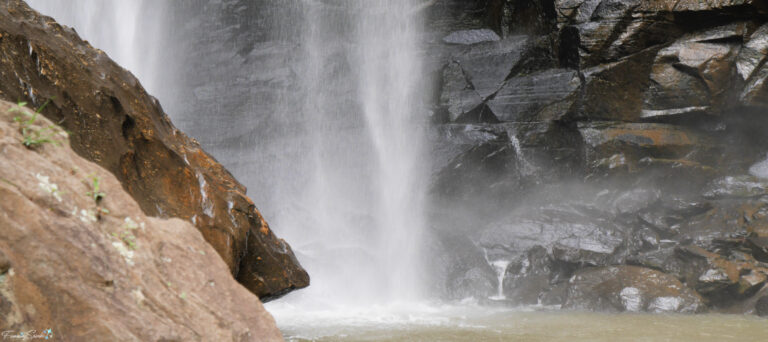We all know “April showers bring May flowers” but May flowers are not the only result of April showers. The seasonal increase in precipitation also boosts waterways and creates vigorous waterfalls. As a result, I’m suggesting this new twist on the old proverb―“April showers bring May waterfalls”.
A recent visit to Toccoa Falls in North Georgia supports this notion. The Falls, located on the campus of the Toccoa Falls College, are easily accessible from a 100-yard gravel path.
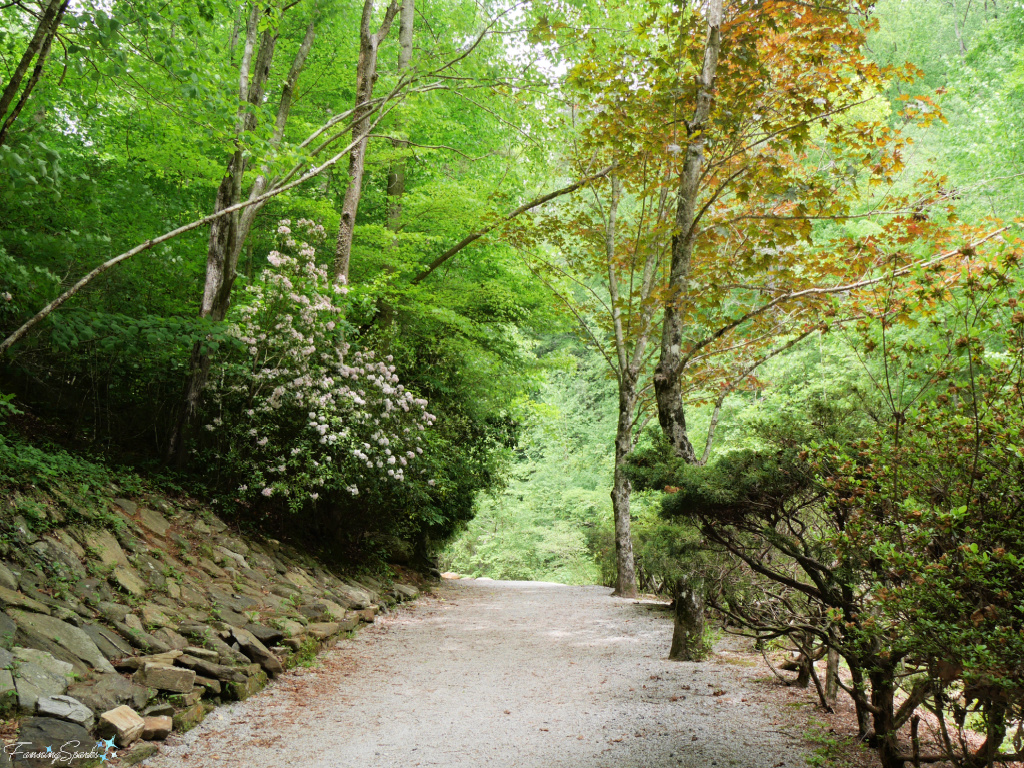
The Toccoa Creek is visible along the path.
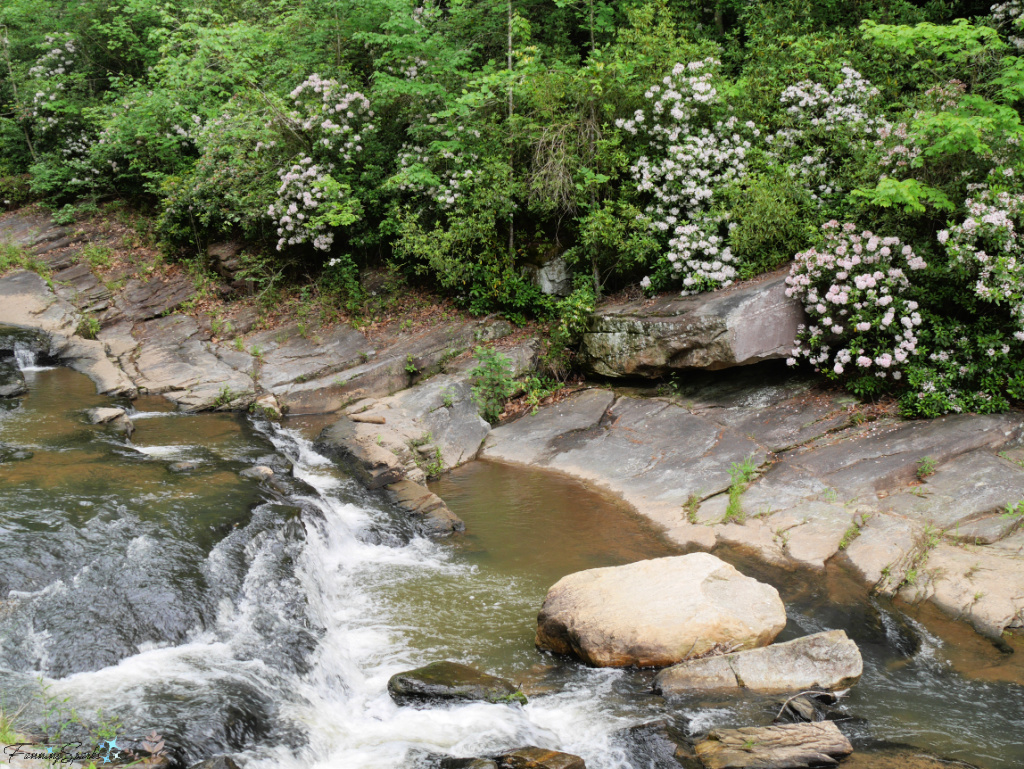
Several flowering shrubs, including mountain laurel and rhododendron, were in full bloom during my visit.
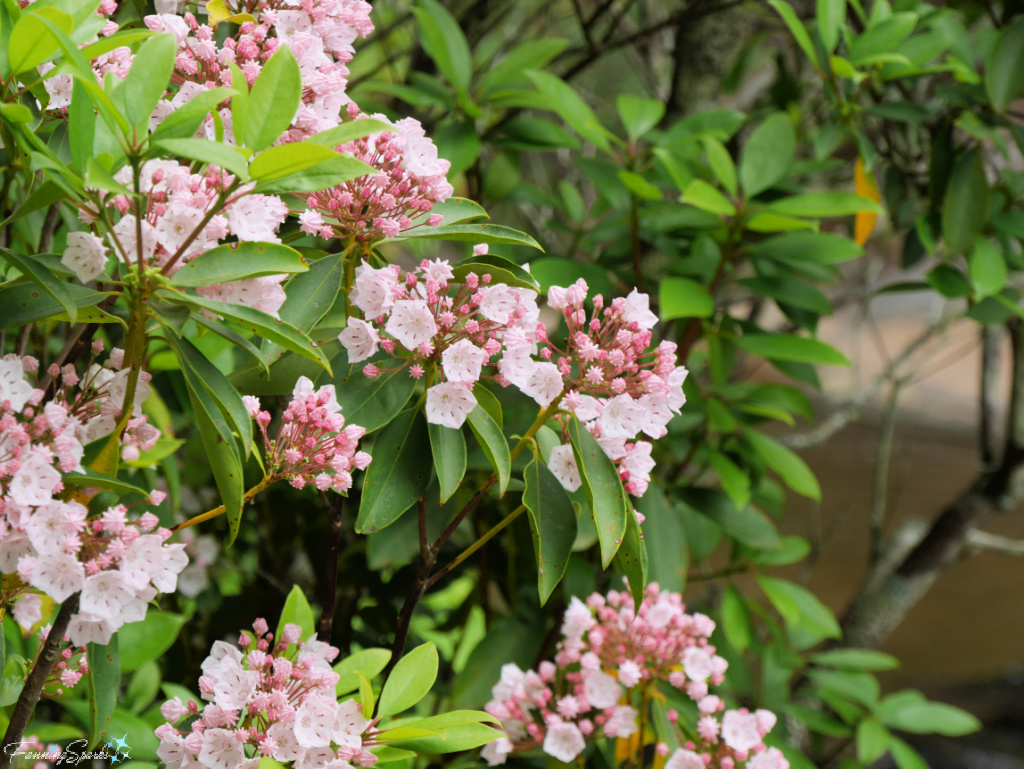
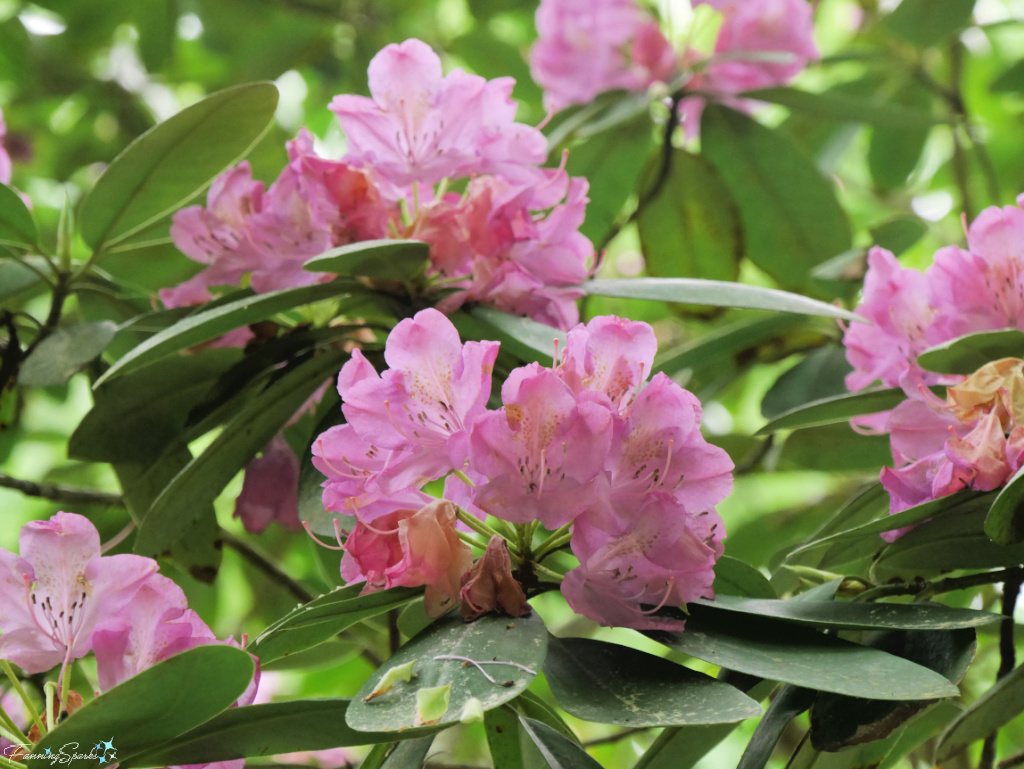
Rounding the final bend, I was astonished to see this majestic waterfall.

One minute, I was strolling along a well-groomed, gentle, garden path and, the next minute, I was standing at the base of this magnificent, vigorous, outburst of falling water.
What started as an ordinary day trip turned into an awe outing filled with awe-inspiring and delightful surprises. I first learned about the power of “Awe Outings”, as defined by the Greater Good in Action’s Pathway to Happiness program, while writing a blog post about Cultivating a Sense of Wonder and Awe. The idea is to visit an unfamiliar destination with physical vastness. Then to slow down and engage all the senses to fully appreciate the wonder and inspiration of the outside world.
Seeing the waters of Toccoa Creek drop 186 feet and plunge down into the rocky pool was awesome!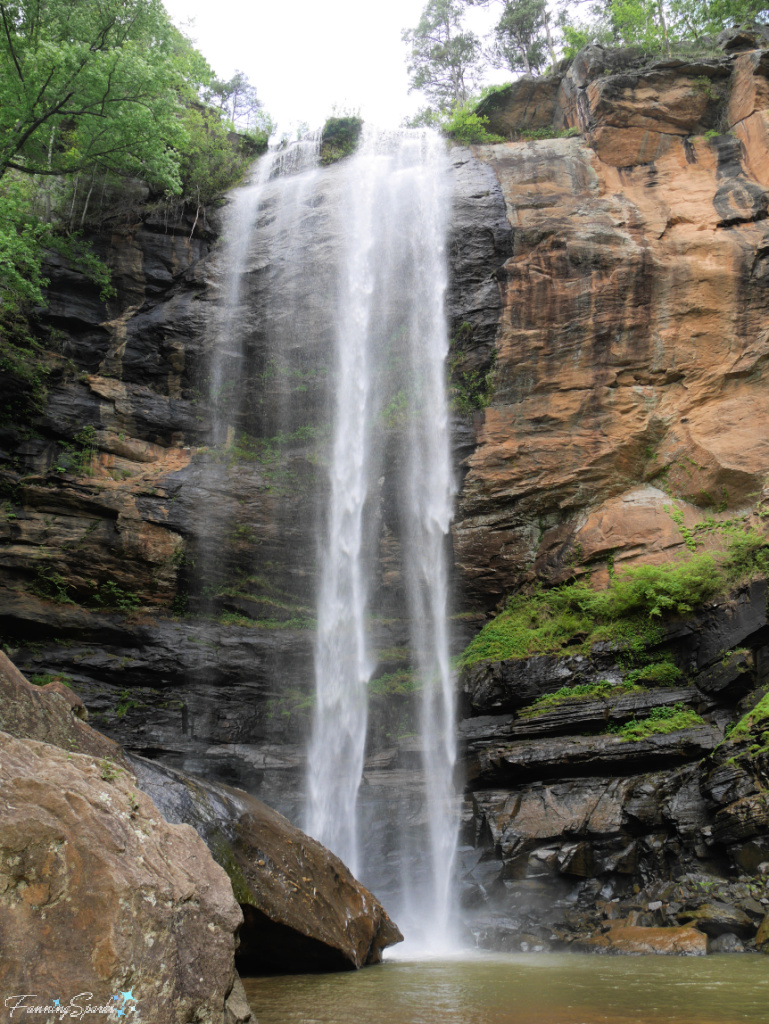
In addition to seeing the beauty, I felt the gentle mist on my skin, smelled the rich dampness and heard the roar of the crashing water. It was a true multisensory experience.
With my head bent way back, I was able to see the water being released over the edge of the cliff.
The water free falls, in ever-changing patterns, all the way down…
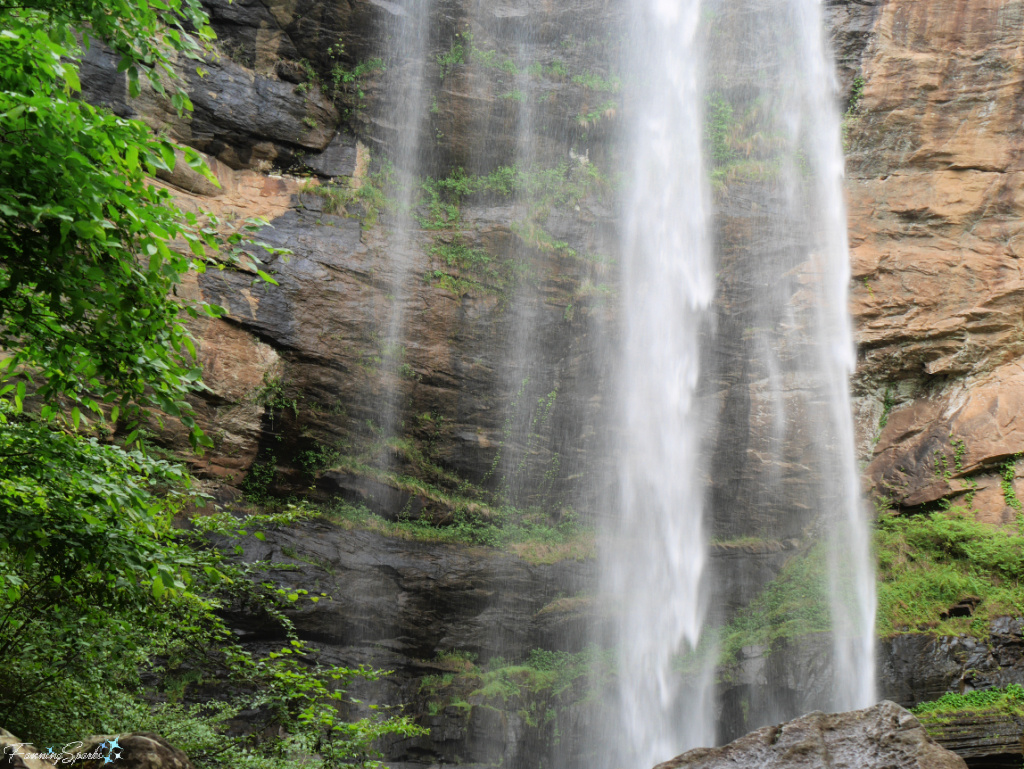
… into the deep plunge pool at the bottom.

Finding the right words to describe this waterfall was rather challenging so I searched out a few online experts for help. According to the National Geographic article, Waterfall, “There is not a standard way to classify waterfalls. Some scientists classify waterfalls based on the average volume of water in the waterfall. … Another popular way of classifying waterfalls is by width. … Waterfalls are also classified by height. … One of the most popular, if least scientific, ways to classify waterfalls is by type. A waterfall’s type is simply the way the [waterfall] descends.” The article goes on to describe several types of waterfalls including, for instance, block waterfall, cascade, chute and fan.
Author Gregory Plumb uses a similar approach in his 1998 book, Waterfall Lover’s Guide to the Pacific Northwest, when he identifies the eight “waterfall forms” listed below. He notes “it is not uncommon for falls to possess elements of more than one form”.
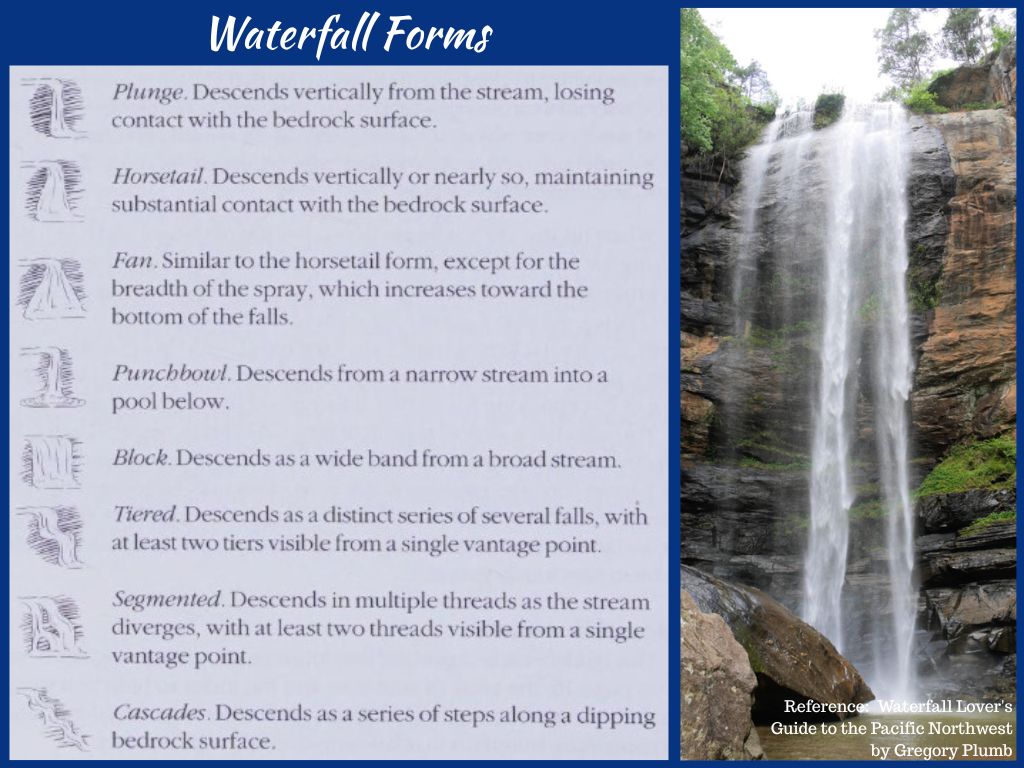
The types of waterfalls noted in the National Geographic article and the forms of waterfalls described by Plumb are more or less in agreement. A third resource, the World Waterfall Database, uses “a heavily modified derivative of the classifications outlined by Greg Plumb”. As they explain on their website. “we wanted further granularity and opted to break down the hierarchy twofold: first based on the overall pitch of the waterfall, and then based on what shape the fall takes as it makes its descent. There are five primary Categories of falls in this system: Plunge, Horsetail, Steep Cascades, Shallow Cascades, and Rapids. Additional delineation is then applied depending on characteristics such as the breadth of the falls, whether it splits into two or more channels, whether it falls in multiple successive drops, etc.” See More Info section below for links to more details.
The World Waterfall Database describes Toccoa Falls as a “plunge” waterfall which they define as “the ‘classic’ type waterfall, where the stream drops cleanly from the cliff and free-falls all the way to its base. Plunge type waterfalls will typically have an overall pitch of between 75 and 90 degrees.”
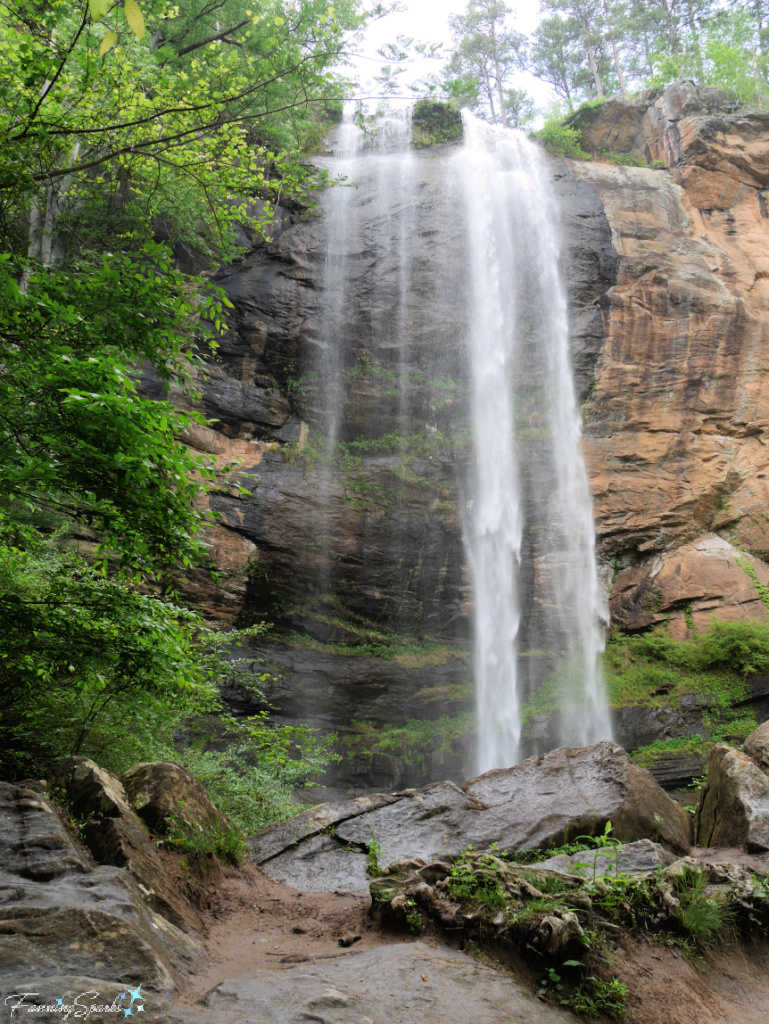
After learning about the different forms of waterfalls, I started wondering about other waterfalls I’ve visited.
Anna Ruby Falls, which are also located in North Georgia, are side-by-side twin falls. A fairly steep ½ mile paved trail takes visitors to these popular falls. “Tumbling down from Tray Mountain, Curtis and York Creeks flow over exposed granite to form two extraordinary waterfalls. The taller of the two, formed from Curtis Creek, drops 153 feet, while York Creek joins it with a 50-foot drop. Together, they form Smith Creek at the base of the falls” explains an informational sign at the site.
The sign goes on to explain “Legend has it that a local confederate soldier, Colonel John H. ‘Captain’ Nichols, found the waterfalls while horseback riding in the area and decided to give both falls the name Anna Ruby, after his only daughter”.
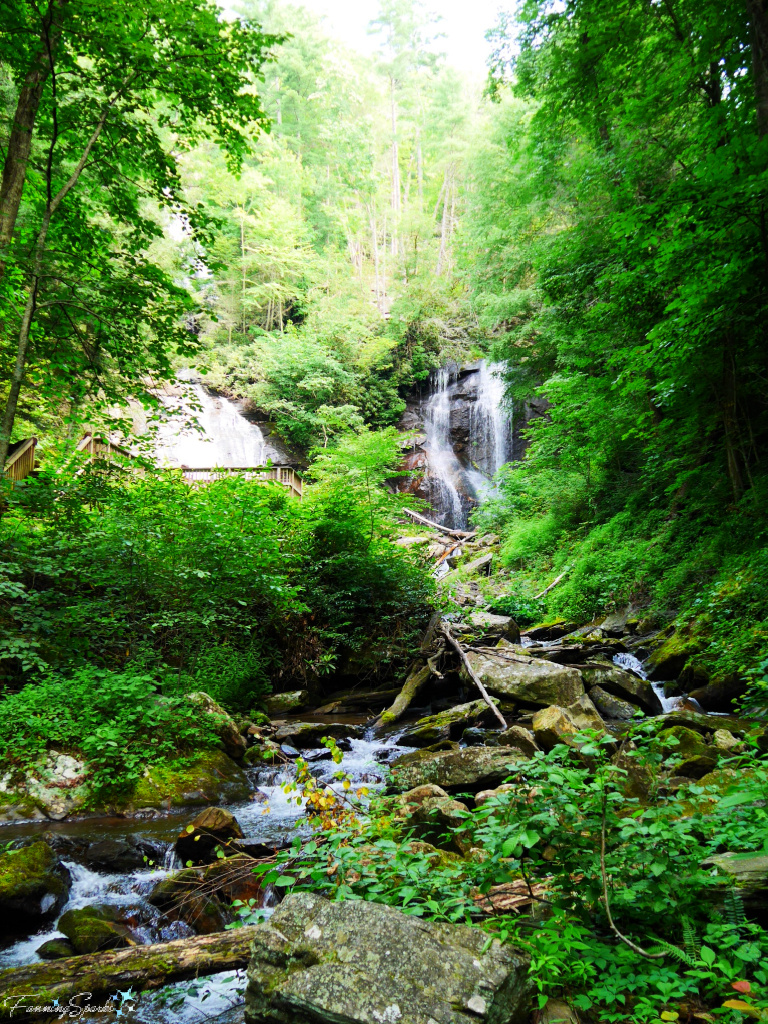
The World Waterfall Database describes Anna Ruby Falls as “tiered horsetails”. “Tiered-type waterfalls”, they explain, “are produced when the stream makes two or more consecutive leaps back-to-back in a stair step fashion.” and “Horsetail waterfalls occur as the stream descends down a steep, nearly vertical cliff, but retains contact with the cliff face for the majority of its descent. … Horsetail type waterfalls typically have an overall pitch of between 50 and 80 degrees.” Here’s a closer look.
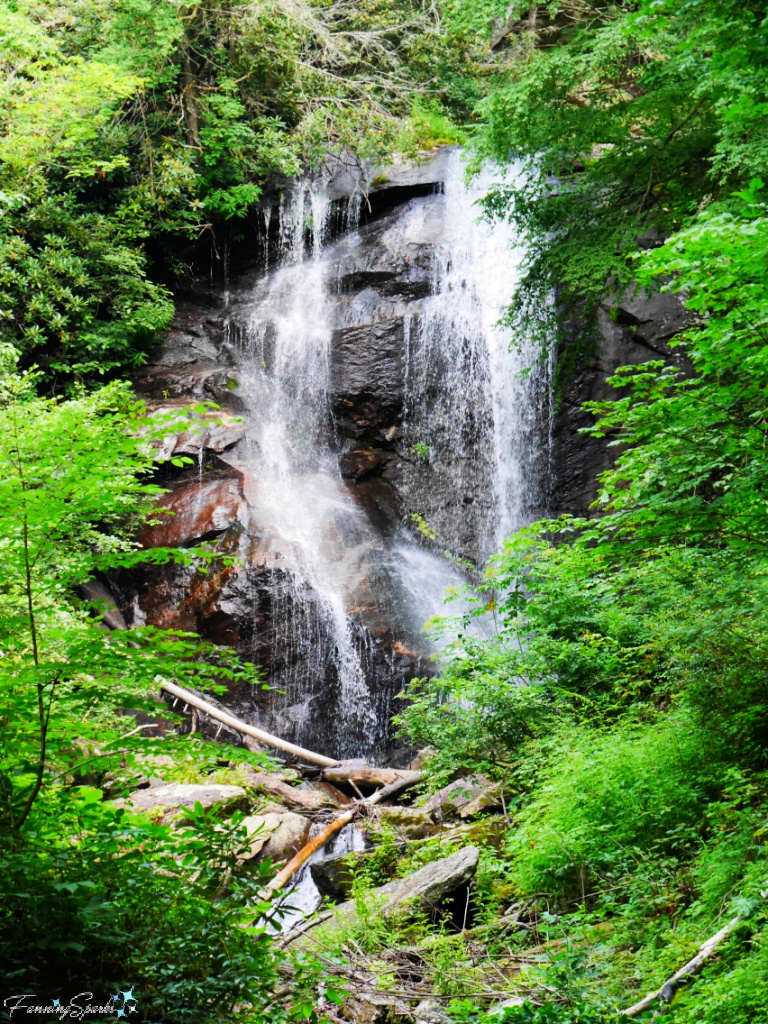
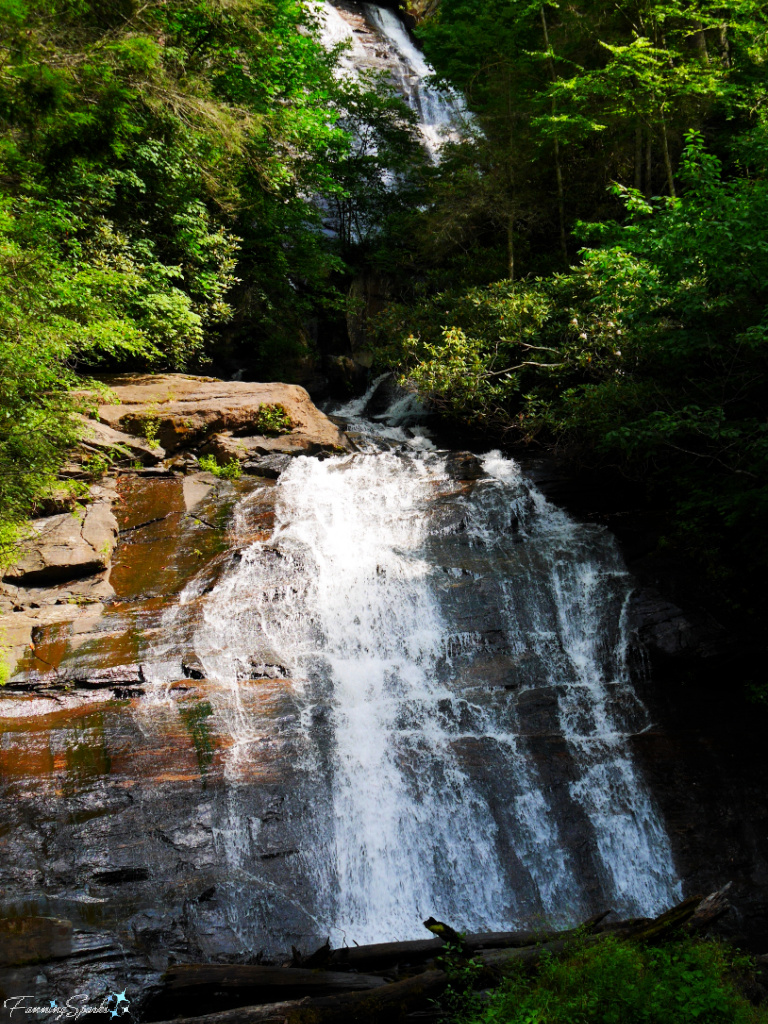
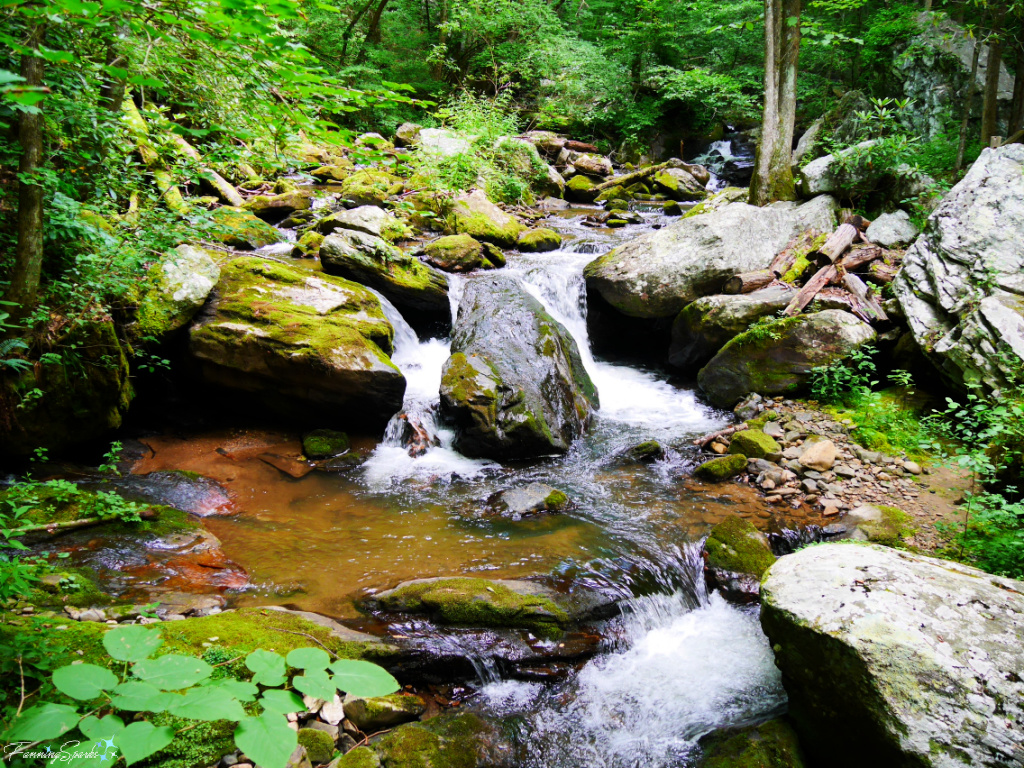
DeSoto Falls are also located in North Georgia and also described as “tiered horsetails”. There are reported to be five beautiful falls along the two-mile DeSoto Falls Trail including DeSoto Falls, Lower Falls and Upper Falls. I’m not sure which falls are captured in my photos below.
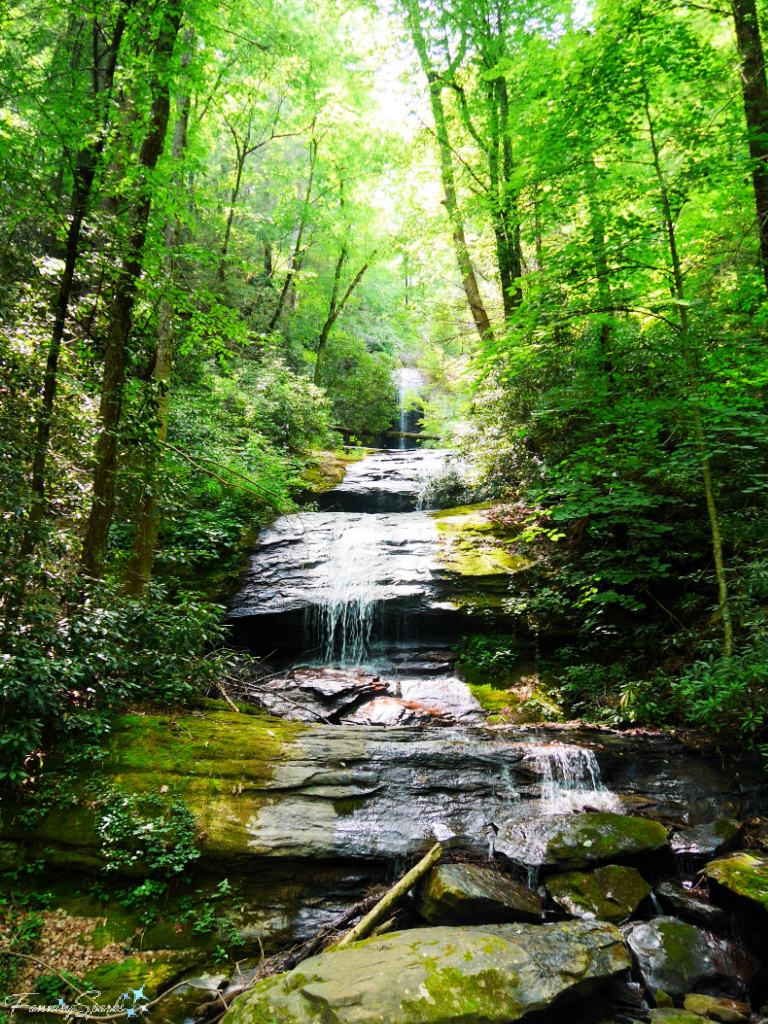
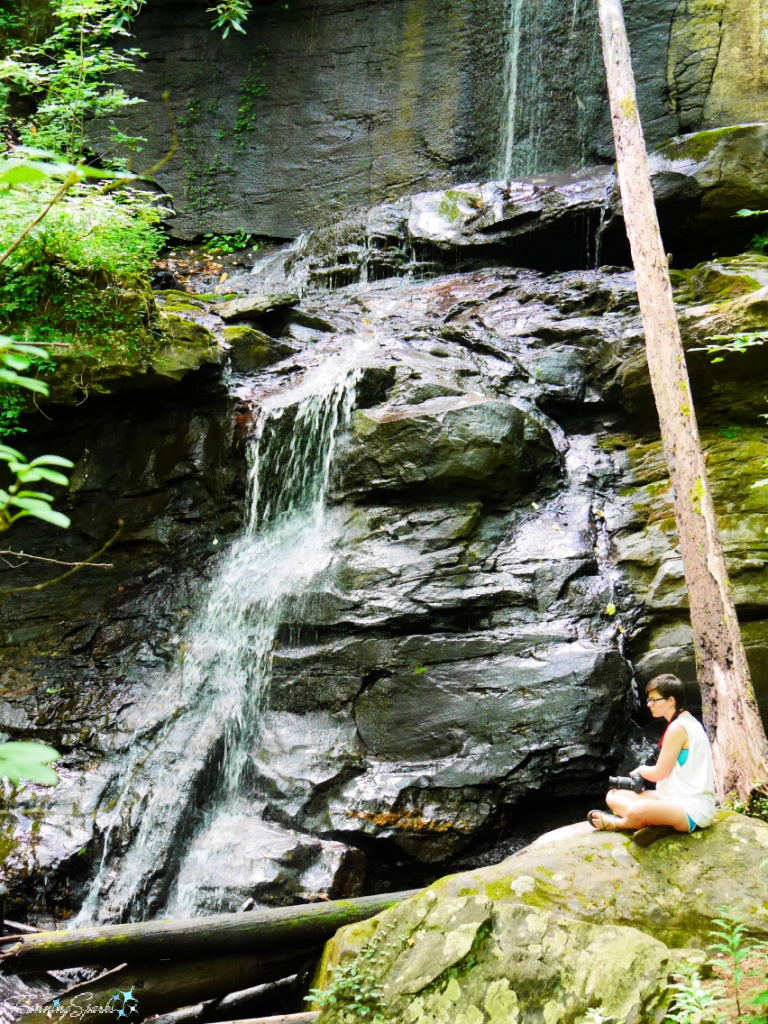
An informational sign on site states “The waterfalls got their name from a legend that tells of the finding of a piece of armor near the falls. It is believed that the armor belonged to Hernando DeSoto or one of his fellow explorers”.
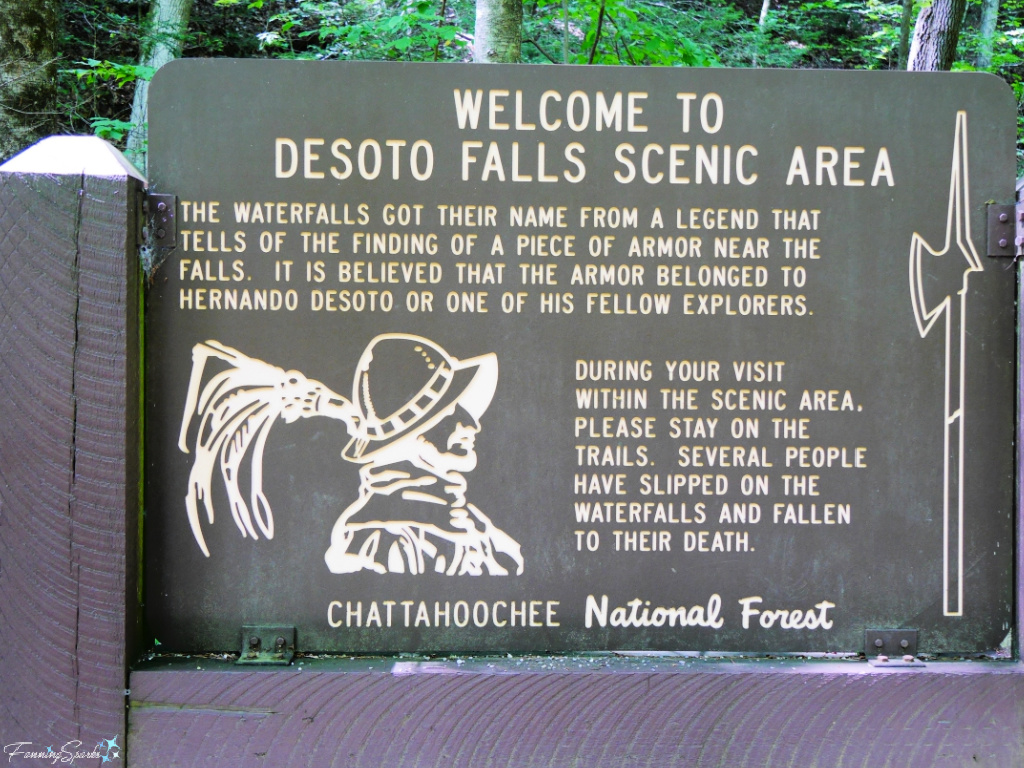
I’ve also seen a few waterfalls in Japan. When my sister Marian and I hiked a section of the Nakasendo trail between Tsumago and Magome (see previous blog post Postcards from Japan #2), we stopped to see the Odaki and Medaki Waterfalls along the hiking trail. The waterfalls aren’t large but have an interesting backstory.
The Japan Tourism Agency explains “these two waterfalls are known as o-taki (male; on the left) and me-taki (female; on the right). The male waterfall is taller and broader than its female neighbor. Photographs of log-driving in the 1920s show that the male waterfall was once about 50 percent taller and broader than it is now, with a deep pond at its foot.
The male waterfall has appeared in popular Japanese fiction. In Musashi, the classic samurai epic by Yoshikawa Eiji (1892–1962), the hero [Musashi Miyamoto] plunges under the male waterfall to cool his ardor for his ladylove [Odori] and ensure that he can maintain a proper focus on the discipline of the sword”.
Although these waterfalls aren’t listed in the World Waterfall Database, I’d say they are also tiered horsetails. The Odaki (male) waterfall is shown below.
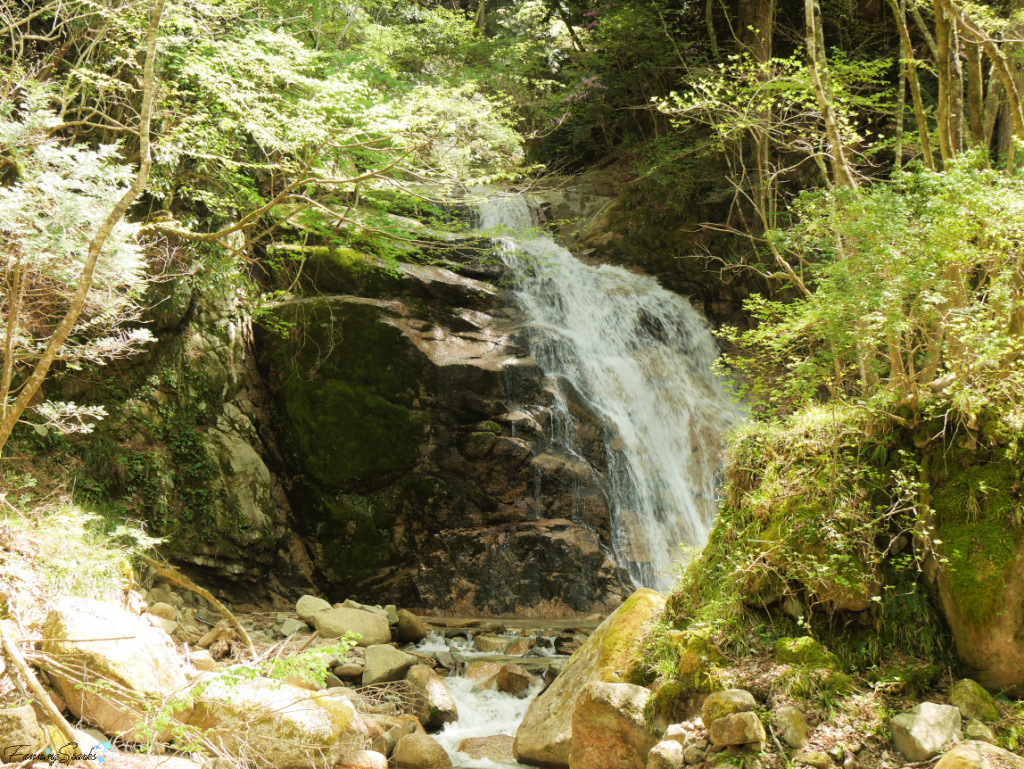
This is the Medaki (female) waterfall.
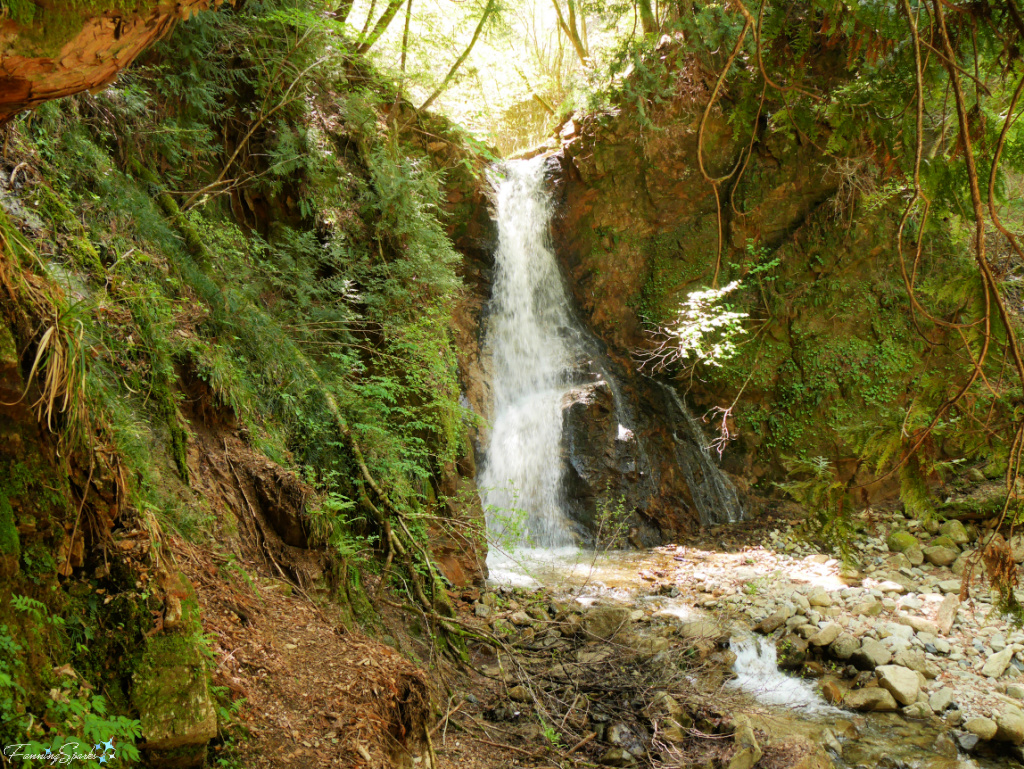
While visiting Newfoundland Canada with my friend Vicki (see previous blog post Postcards from Newfoundland #2), we took a boat tour of Western Brook Pond in the outstanding Gros Morne National Park. Despite its rather pedestrian name, Western Brook Pond is spectacular. “On board,”, as the Parks Canada website points out, “behold the spectacular glacier-carved land-locked fjord, waterfalls cascading from 2000 feet that often turn to mist before reaching the pond, billion year-old cliffs, and frequent wildlife sightings”.
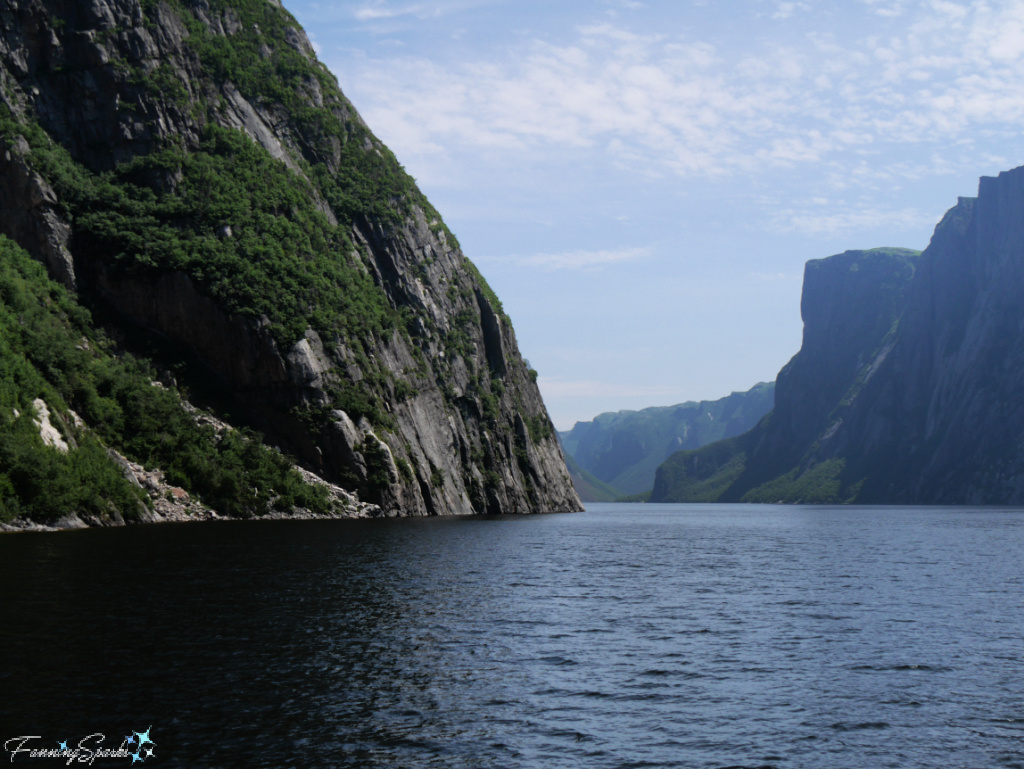
We visited during July―the weather was beautiful, the waterways were full and the waterfalls were gushing.
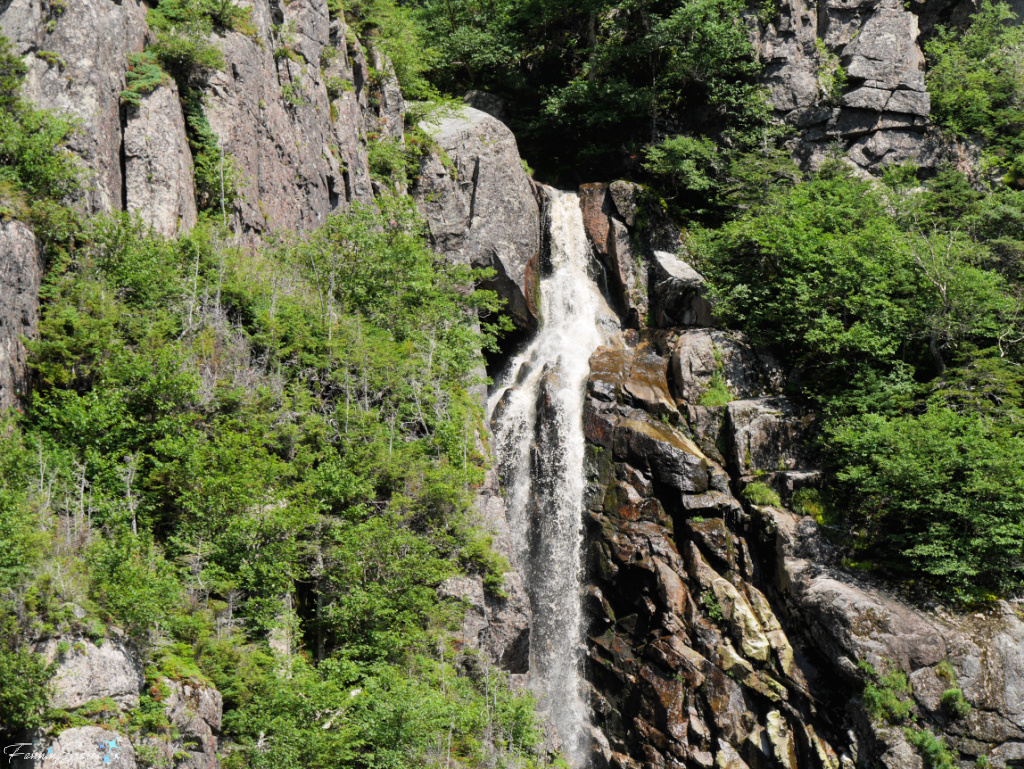
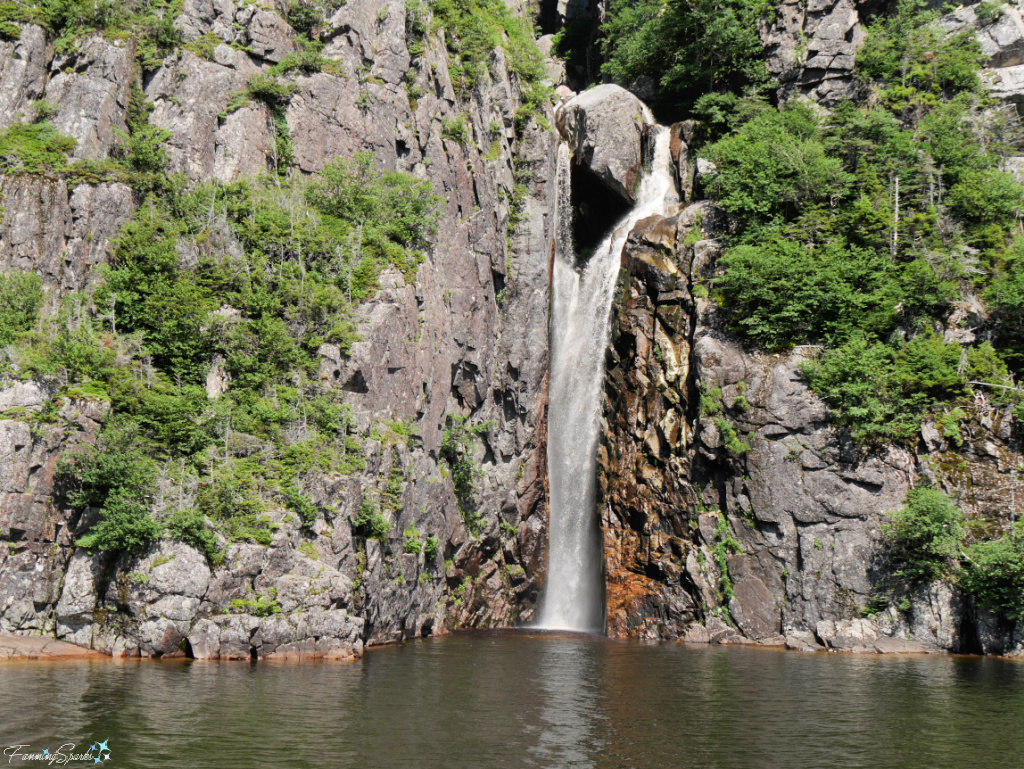
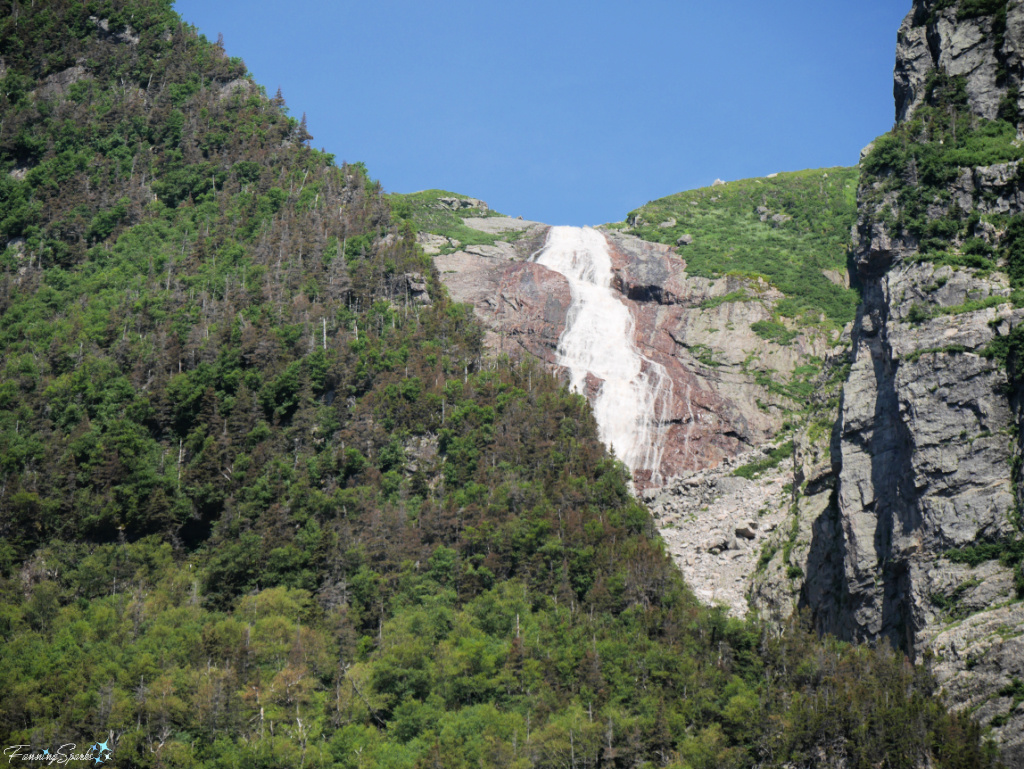
All of the waterfalls were impressive but Pissing Mare Falls was the most amazing. Not only do they have the best name, but their sheer size is breathtaking. The World Waterfall Database describes Pissing Mare Falls as a “tiered waterfall” which is 1,125 feet high “with an unbroken drop of 820 feet”.
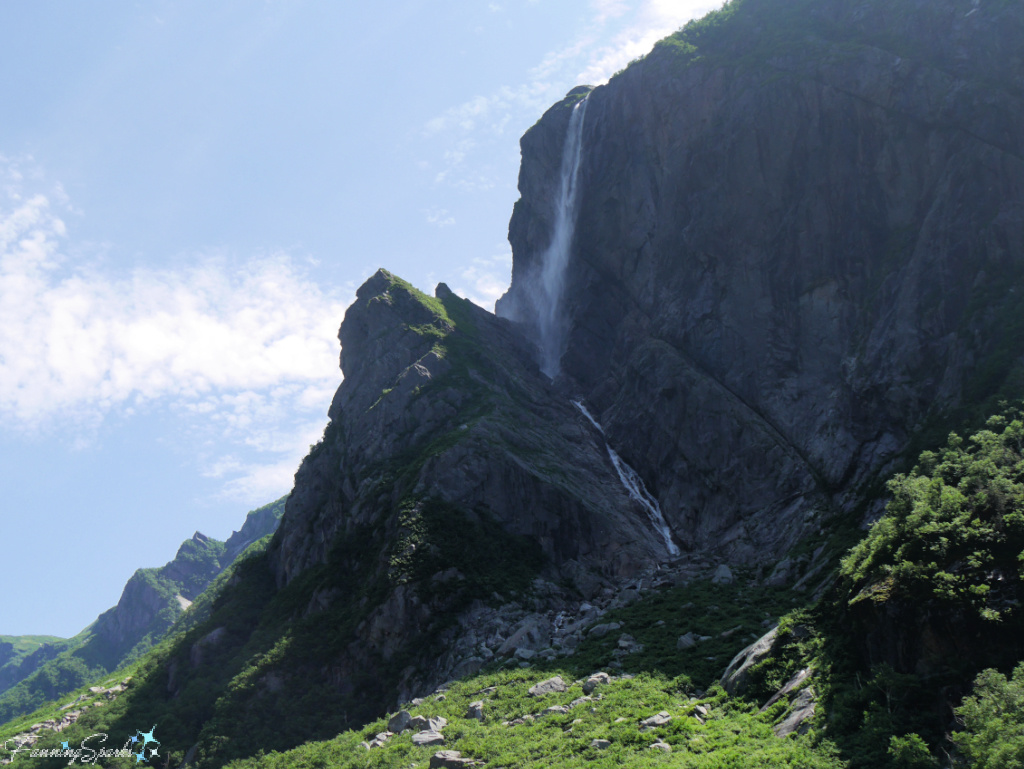
Here’s a closer look at that majestic vertical drop…
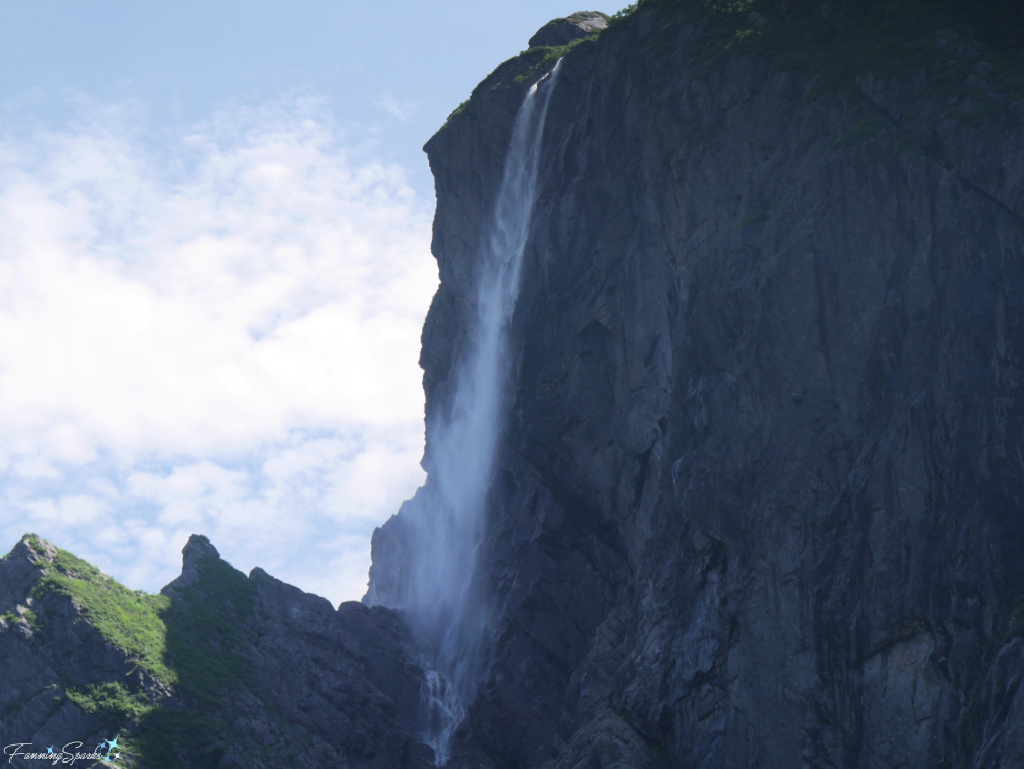
… which plunges down the face of the cliff…
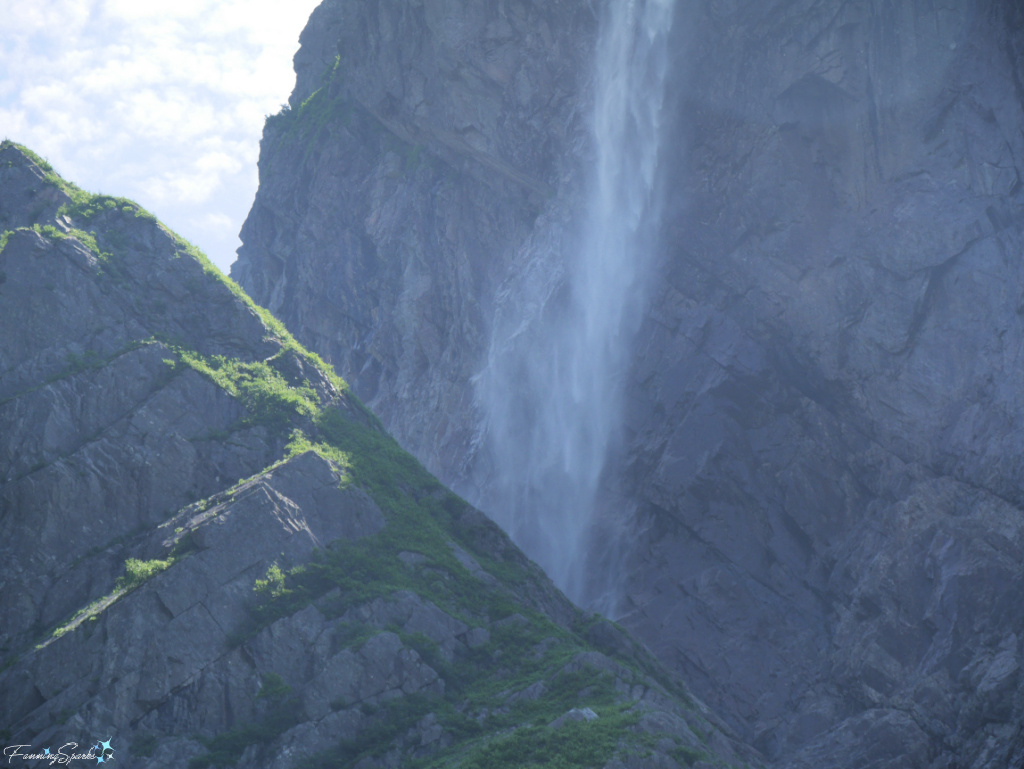
… before crashing into the rocks below and either evaporating into thin air or rushing down the mountain.
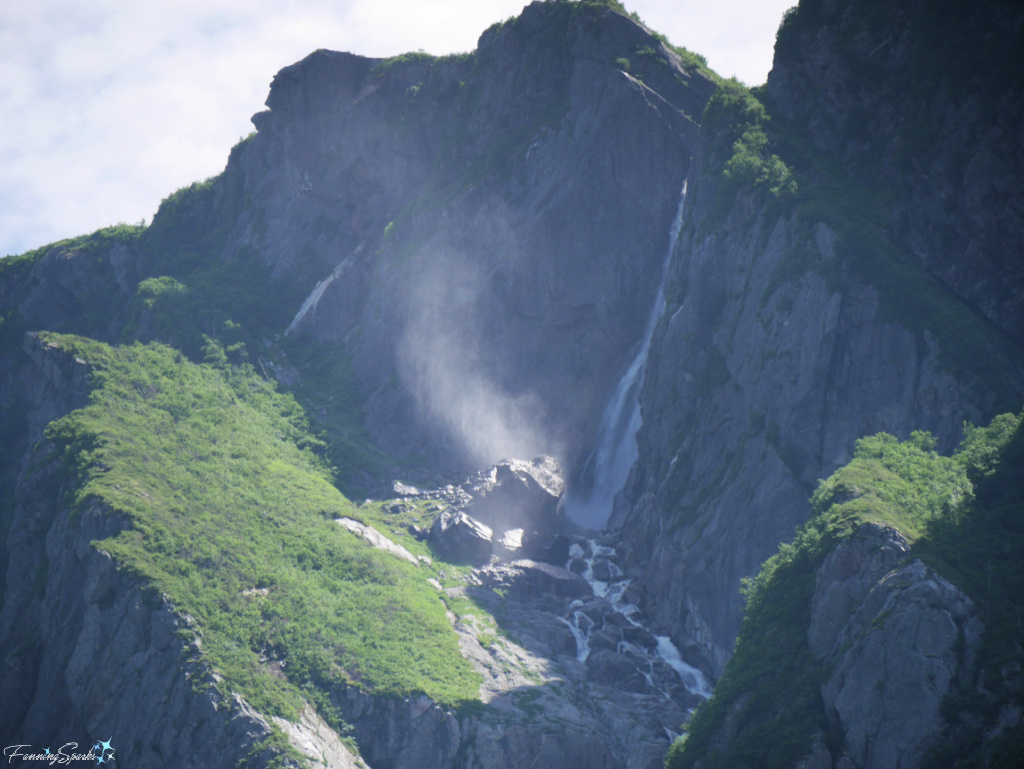
Chasing waterfalls, or “waterfalling” as dedicated enthusiasts call it, has a universal appeal. But as is often the case when a trend catches on, it can quickly become too much of a good thing. Back in 2018, the folks at the World Waterfall Database had to change their content as explained in this update.
“Long story short, too many waterfalls are being loved to death. The impact of Social Media and its associated behaviors on some of these waterfalls is getting harder and harder to ignore or brush aside. There are countless instances [of] waterfalls where rocks are being marked with graffiti, moss and plants being trampled into muddy pulp around the base of waterfalls thanks to surges of visitors, inconsiderate visitors leaving piles of trash or feces, bonfires being started illegally … and camping where not allowed, and so forth. This is not isolated to any particular country or region either, it’s been happening at an increased pace all around the globe, but much more frequently in places which are currently popular for Social Media visitation (Iceland, for example). Many waterfalls which are more off-the-beaten-path are essentially having paths beaten to them … So, while encouraging visitors to be good stewards of the land, practicing leave no trace ethics, and sharing information responsibly is the obvious thing to ask, it’s become clear that it’s necessary to go one step further … the World Waterfall Database will no longer provide explicit directions to any waterfalls which are not accessible via an established and maintained trail.”
More Info
Previous blog posts mentioned in this blog post include:
. Cultivating a Sense of Wonder and Awe
. Postcards from Japan #2
. Postcards from Newfoundland #2.
For more information about the waterfalls featured in this blog post, please check the following websites:
. Toccoa Falls in Georgia, USA, see article on Toccoa Falls College website
. Anna Ruby Falls in Georgia, see listing on USDA Forest Service website
. DeSoto Falls in Georgia, see listing on USDA Forest Service website
. Odaki and Medaki Waterfalls in Nagiso, Japan, see article on Nagiso Tourism Association website
. Pissing Mare Falls in Gros Morne National Park Newfoundland, Canada, see Western Brook Pond article on Parks Canada website.
In addition to the websites mentioned above, the following books and articles were consulted in the writing of this blog post:
. Waterfall National Geographic article published in October 2023
. Waterfall Lover’s Guide to the Pacific Northwest book by Gregory Plumb which is available here on Internet Archives
. World Waterfall Database website. A full description of their Waterfall Types can be found on the World Waterfall Database Help page.
. Various Wikipedia entries.
Today’s Takeaways
1. Spring’s seasonal increase in precipitation boosts waterways and creates vigorous waterfalls.
2. Waterfalls are typically described by form, height, width and/or volume of water.
3. Consider visiting a waterfall near you for your next awe outing.


